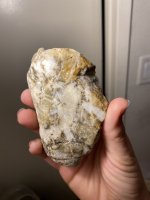Hello,
I am a final year student of BEE Telecom. I chose my Final Year Project to design a Transmitter and Receiver for GPR. GPR has already been developed in my institute. It uses VNA (Vector Network Analyzer) as its source.
Some features of that project are:
-> Double-Ridged Horn Antenna
-> Synthetic Aperture Radar (SAR) with UWB source (VNA) in Mono-synthetic mode
-> Only s11 (first parameter of s-parameters) was measured by VNA
-> 2.4 GHz center frequency with 1 GHz Bandwidth---a pulse with 1 ns duration transmitted by a Stepped-freqeuncy transmitter
-> Tx and Rx are in VNA
-> Only Return Loss measurements are observed
-> Data from VNA is processed in Matlab to create a rough image of observed reflections
I hope the data above is enough for you to get the idea. I have just started working in the project
Since VNA is a multipurpose device and the already-implemented project used it to find S11 only, I chose this project to introduce portability in GPR. (VNA available in my institute is bulky)
In short, my goal is to develop a Tx and Rx which function as the VNA does; thus introducing portability.
The problem is that I have no idea where to begin. I need a head start. I need to develop complete understanding of how the Stepped-Frequency Transmitter (used in already-developed project) and compatible receiver works and I have to develop the whole system without changing other features like antenna, codes etc.
Please guide me and point me in the right direction.
Also, any low-cost/medium-cost idea from you will be appreciated.
Regards.
I am a final year student of BEE Telecom. I chose my Final Year Project to design a Transmitter and Receiver for GPR. GPR has already been developed in my institute. It uses VNA (Vector Network Analyzer) as its source.
Some features of that project are:
-> Double-Ridged Horn Antenna
-> Synthetic Aperture Radar (SAR) with UWB source (VNA) in Mono-synthetic mode
-> Only s11 (first parameter of s-parameters) was measured by VNA
-> 2.4 GHz center frequency with 1 GHz Bandwidth---a pulse with 1 ns duration transmitted by a Stepped-freqeuncy transmitter
-> Tx and Rx are in VNA
-> Only Return Loss measurements are observed
-> Data from VNA is processed in Matlab to create a rough image of observed reflections
I hope the data above is enough for you to get the idea. I have just started working in the project
Since VNA is a multipurpose device and the already-implemented project used it to find S11 only, I chose this project to introduce portability in GPR. (VNA available in my institute is bulky)
In short, my goal is to develop a Tx and Rx which function as the VNA does; thus introducing portability.
The problem is that I have no idea where to begin. I need a head start. I need to develop complete understanding of how the Stepped-Frequency Transmitter (used in already-developed project) and compatible receiver works and I have to develop the whole system without changing other features like antenna, codes etc.
Please guide me and point me in the right direction.
Also, any low-cost/medium-cost idea from you will be appreciated.

Regards.



